- Home
- About us
- Products
- Dealer Enquiry
- Blog
- Contact Us
- Home
- About us
- Products
- Dealer Enquiry
- Contact Us
- 044 -2486 1994
- +91 99623 98222
- sales@nantech.in
- REQUEST A QUOTE
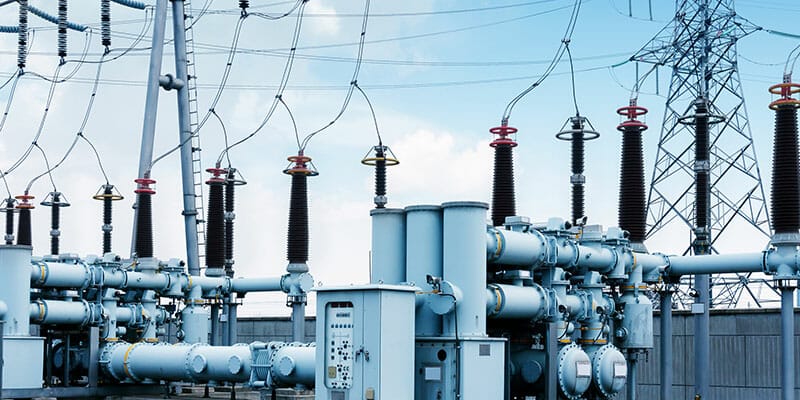
When it comes to electricity distribution & supply, the role of transformers is essentially crucial. Before electricity reaches our homes from power stations, its overall voltage needs to be reduced in such a way that our electric wires and equipment are able to operate without getting damaged. Electrical gadgets of even the highest quality such as UPS systems from Nantech - one of the leading UPS manufacturers in Chennai can operate smoothly because transformers do their job.
So, high voltage transformers come into the picture to ensure the optimum performance of electricity supply systems and the safety of users. Needless to say, the role of transformers is quite vital. Let us learn more about the overall scheme of things.
Essentially, high-voltage transformers are electrical equipment with the ability to decrease the voltage phases of electricity. These transformers need to have the highest standards of insulation installed in them to meet the usage requirements of people living in a particular locality. However, even the best high-voltage transformers experience breakdowns when the voltage levels surge too much in a limited time. Technically, all high-voltage transformers operate in a single phase of voltage having core-type functionality.
Varieties of High Voltage Transformers
Electromagnetic induction is the general principle based on which all high-voltage transformers operate. However, there are three important varieties of transformers, namely:
Various Designs of High Voltage Transformers
To transform voltage as well as current electric levels, transformers use the concept of electromagnetic induction in both coils. They could be set up in either a single phase or 3 phase. When you start moving towards the bottom of the list of the high current voltage coils, the size as well as costs of a transformer tend to increase. The single-phase configurations can be set up for single-phase, dual-phase, quad phases as well as ladders or even 5-lead. Three-phase configurations, on the other hand, are set up for Wye and Delta configurations.
If the high voltage transformers are to be utilized for multiple low voltages and also to avoid short circuits, then they must have multiple primary. When you are looking to buy or design High-voltage transformers, there are some crucial factors to consider. These factors include the highest ratings for secondary voltage & current, greater output as well and power ratings. These devices can also be built in the form of toroidal transformers. Laminated transformers may also be considered. Toroidal pulse transformers generally have copper wire surrounded around with a cylindrical core to allow the magnetic flux to flow. On the other hand, the laminated transformers have layered cores. They are also referred to as E-I transformers which have been insulated using an insulating dielectric material.
The method of operation of high voltage transformers must be pretty clear from reading the above sections. Various means and methods are used to decrease the voltage of electric currents in the transformers so the electricity becomes safe for use by the components to which it shall go.
The fundamental principle in transformer operation is this– an electrical charge generates a magnetic field and the magnetic force inside the winding can start producing voltages across the coil. As a result of their close vicinity, the electricity in the primary coil generates a magnetic field causing power output throughout the secondary coil to be much lower in terms of voltage. If the secondary coil has more turns, it generates more voltage, and the transformer is referred to as “set-up”. On the other hand, a lower number of turns produces lesser voltage and is termed a “step down”.
At its core, high-voltage transformers are converters that receive electricity at high voltages. Thereafter, voltages are converted from one level configuration to the other, typically from greater to lesser. The insulating abilities of these power transformers should always be cautiously created to endure these high voltages
Also Read: The Complete Buying Guide For Voltage Stabilisers
High-voltage transformers are also utilized to power plasma generators. Specially designed coils are employed to increase voltages to levels that are sufficient to generate plasma. Wind turbines and other crucial sources of renewable energy make use of these devices to transfer energy to where it is needed. Other application areas for these devices encompass:
Staying Safe When Working With High-Voltage Transformers
Since current transformers have the ability to handle high voltages, it is critical that precautionary measures are taken wherever it has to be handled directly, with the goal of preventing accidents.
Takeaway
The significance of using top-notch transformers in a distribution system for electricity cannot be overstated. Transformers are an essential component for ensuring good electrical service and network security. High-voltage transformers are used in a wide range of industrial sectors and systems. They seem to be especially helpful for securely managing voltages lesser than or equal to 15,000 volts.
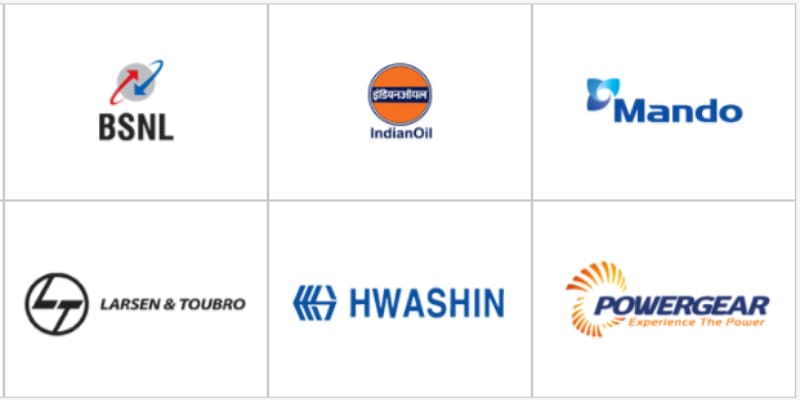
The sun is our biggest source of energy. It is clean, uncompromised, unadulterated, sustainable, and renewable. With at least 300 cloudless, sunny days in a year, India is a prime location for capitalising on solar energy. Moreover, the location and demographic of India makes it conducive for deploying solar energy systems. Therefore, signing a contract with your solar panel manufacturer could be a brilliant way to save money and electricity.
Solar panel installation could mean a world of difference for your business overheads. But do they work for everyone? Apparently so. Statistics say India added 8,811 Mega Watts of solar power capacity within January to September 2021. This number is about 280% higher than the previous year's numbers.
According to the Ministry of New and Renewable Energy (MNRE), solar energy contributes 46% share in the total Renewable Energy segment. This makes solar energy the major contributor of renewable energy, followed by wind energy and bio-power.
If these statistics are not enough to convince you about investing in solar panels, we have the reasons to help you understand why it is a worthwhile investment.
Solar panel installation is a long-term investment, and it may take a while before you start generating a decent ROI. Therefore, you should consider a few factors before giving the green signal. You need to:
Coming back to our topic of discussion, here are some of the top reasons to capitalise on solar power installation:
1. Tax benefits galore
The biggest advantage of investing in solar energy is the tax benefits offered by the state and central governments. The government offers tax incentives and financial programs to show their support and consider the high upfront costs of solar panel installation. The top five support systems offered by the Indian government to promote solar energy are:
2. Reduced operational expenses
Solar energy opens the gateway to operating a business almost free of electricity charges. Therefore, no matter how large and profitable your organisation is, a solution with the potential to eliminate such a large expense should be ignored.
A well-designed solar panel system can curb your power bill upto 75%. For example, let's assume you pay Rs.10,000 a month for electricity consumption. Once you've installed solar panels, this number could drop to Rs.2500 per month. You can use the saved money to expand your business or automate your workflow. You could even invest it in a monitoring software that tracks your solar system's energy generation.
The possibilities are endless! So, why miss it?
3. Increased property value
Will your solar panels increase your property taxes? Not likely. Will it increase your property value? Not many people will say no to clean, renewable energy that comes loaded with tax benefits.
Houses and commercial buildings with rooftop solar panel installations have a higher market value than those without them. Moreover, total ownership of the installation allows you to transfer it to the new owner without any hassles.
4. Longevity and sustainability
Solar power is the largest untapped renewable power source with indefinite longevity and sustainability. Every other power source has its limitations.
Hydroelectric power, for example, is clean power but is highly dependent on monsoonal rains. Besides, the need for additional hydroelectric power adds to the risk of flooding premium lands and the destruction of ecosystems. On the other hand, nuclear power is also highly susceptible to accidents and nuclear waste problems. Fossil fuels like coal and petroleum are already facing a bleak future.
Solar power is the clear winner here, harvested as long as the sun blazes on.
5. Low maintenance costs
Commercial solar panels require little maintenance and are virtually silent. The solar cells are encased in a non-corrosive aluminium frame surrounded by tempered, protective glass. As a result, they are built specifically to stand up to the elements, enduring rain, hail, wind, and snow - just about any weather-related threat. Moreover, they are usually located on the roof of commercial buildings, so they are easily accessible for maintenance activities.
6. Low carbon footprint
If you want to be an environmentally responsible business, switching to solar energy would be the best option. Even a small rooftop solar panel can significantly reduce carbon dioxide emissions. Studies suggest that an average 3kW solar system has the potential to power an entire household. Therefore, the carbon emissions produced from one household equals the amount that can be avoided by installing just one solar panel.
Also Read: Solar Panels: An Eco-Friendly Way To Power Your Home
7. Elimination of power outages
Unexpected power outages are like a plague for the Indian industrial sector. A single power outage can cause serious problems such as:
However, the situation is entirely different with solar energy. The chances of facing power outages are almost nil as there is consistent energy input to keep your operations running to full capacity.
8. Generates great ROI
When switching to solar power, you are making an investment rather than an expense. This is an investment that generates better ROI than many of your other investments. Many businesses are wary about taking the plunge with solar power installation because of the initial expenses. However, it doesn't take long to harvest your initial investment once your ROI starts rolling in.
9. Complete energy independence
When you welcome solar energy, you assert your independence from being dependant on commercial energy sources. Being completely energy independent also means that you:
10. Support for the local economy
When you opt for solar panel installation, you are simultaneously providing job opportunities for job installation experts in your locality. You are, thereby, boosting the local economy by increasing the job availability for experienced and deserving candidates. Don't forget that these very workers could end up being your future customers!
Solar power technology is a wise investment that requires the guidance of experts before you give your consent. Nantech Power Systems Pvt Ltd has a team of experts well-versed in the business nuances of this investment. Call us to discuss your strategies and power requirements to make your decision worthwhile in the long run.
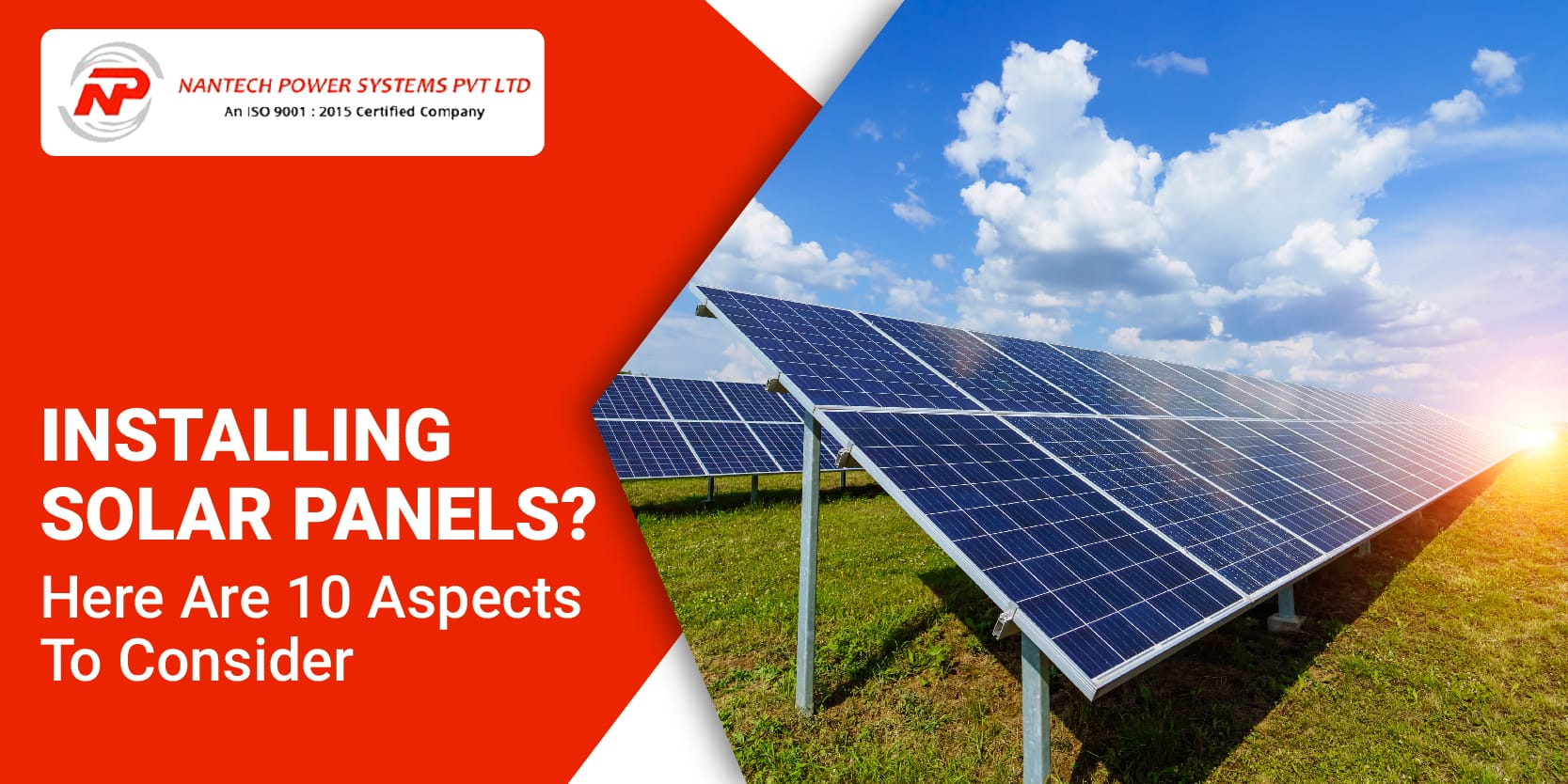
Harnessing the energy of the blazing sun is perhaps the most effective, sustainable, and cost-effective solution to power homes and establishments in India. In Chennai, where the sun beats down mercilessly for much of the year, it could prove a worthwhile investment. Besides, who would say no to a lifetime of sustainable energy?
Over the years, there has been an increased awareness of the importance of renewable energy. Also, as solar energy is seen as the best alternative energy source, people see it as a sensible investment.
It won't take long before you think about buying solar panels to power your home or business. However, like every other purchase, this is an investment that requires careful planning and consideration. To help you make a wise choice, we compiled a list of factors to consider before you bring home your solar panels. Let's take a look.
Condition and layout of your roof
Since your solar panels will be housed on the roof of your building, it is the first thing to come under the scanner. Before you go ahead with the purchase, your roof should be inspected by a professional to assess three aspects:
Depending on the number of panels you require, it can add considerable weight to your roof. Therefore, ensure your roof is in perfect condition and do the required renovations before giving the green signal for the installation.
Property's exposure to sunlight
When evaluating your property before the installation, check if it receives at least four to five hours of direct sunlight. You also need to rule out any sources of shading like trees or buildings that may block the sun from your panels. That said, you should remember that your solar panels will receive photons from the sun even on cloudy days. They do not require blue skies throughout the year, so do not fret!
Amount of energy required.
Your household's energy consumption is determined by the number of family members, electrical devices, usage, and so on. To ascertain the exact number of panels required, you can do the following calculation:
Kilowatts of energy used per day x 0.25 = Number of panels required to produce energy.
Government incentives for solar energy
Solar energy is free and clean energy, and the government provides incentives and subsidies to those wishing to install solar panels. The main objective here is to allow electricity generated from photovoltaics to compete with other energy sources. Apart from India, many other countries provide solar power subsidies to encourage this investment. Therefore, it is crucial to collect all the available information and gain maximum benefits with these incentives.
Choosing the right company for the installation
Solar panel installation is a job for professionals well-versed in similar electrical projects. It is not a DIY project. You will need a reputed installer who will:
It is important to note that certified professionals can only carry out solar panel installation.
Will you lease or buy?
Depending on your finances, you have two options to invest in solar panels:
Whatever the choice, it is a win-win situation as the benefits and profits override the disadvantages.
Connected to the grid or off-grid
Another big decision for installation depends on whether you want to be connected to the grid or run an off-grid system that stores the electricity. Let's break it down for you:
Grid system: Provides you with Net Metering, an incentive that gives you credit on your bill for the excess power produced by your solar panels.
Off-grid system: Not connected to your electricity bill. Hence you need a large storage capacity to save energy and use it when required.
Positioning of your panels
The position of your solar panels has a great impact on the amount of energy generated. For example, if you live in the northern hemisphere, the sun is south of the sky. Hence, if the panels are placed on a south-facing roof, it will allow maximum exposure to the sun's rays. Here are more guidelines for solar panel positioning:
We suggest you seek professional guidance from installation experts to get things done the right way.
Also Read: Understanding The UPS( Uninterruptible Power Supply)
The main objective of installing solar panels is to generate your source of energy and curb electricity expenses. However, it can be tough to calculate how much money you will save. You can use this formula to estimate your saved expenses with solar energy:
Your electricity rate (INR/kWh) + your GST x your solar power system size x 1,168
Go Solar To Save The Earth!
Whether you are saving small or big, you are playing your part in using natural, sustainable energy. Yes, solar panels are a significant investment, but it is one of the best choices you can make.
To ensure that your panels are performance-tested, you should reach out to expert installers like Nantech Power Systems Pvt Ltd. We are Chennai's leading solar panel supplier, experts in installing on-grid, off-grid, and solar-powered street lights. Let's discuss your solar panel requirements and get going with your installation process!
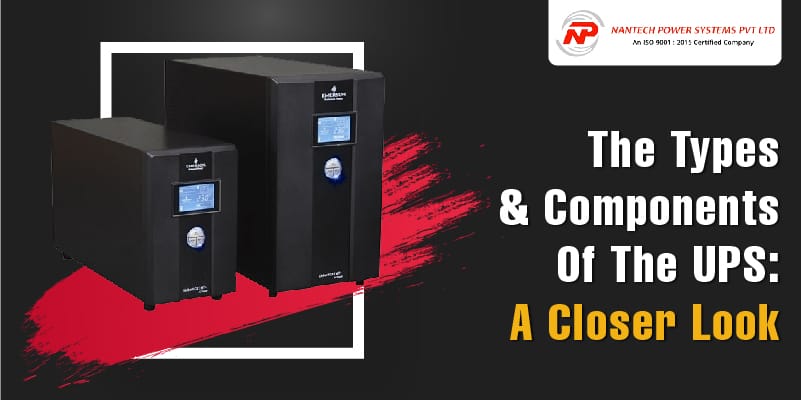
In this age and time, all of us have either used or seen the UPS. It is that magic box that keeps your computer working, the fan running, and the TV blaring even during power cuts. Short for "Uninterruptible Power Supply", UPS is now a common household name. By simple definition, the UPS is an equipment that provides a continuous power supply to electronic devices.
The unreliability of the main electric supply is what fuels the need for the UPS system. In a city like Chennai, you can list a dozen reasons for power failure. The reasons are endless, from shut-downs, load shedding, voltage spikes, and sag, to harmonic distortion and maintenance issues.
In short, the UPS is the savior that powers and protects all hardware components that you rely on for your business and personal work. This includes computers, telecommunication equipment, data centers, and even your fans, lights, and kitchen appliances.
Therefore, it is only fair that you learn more about the UPS, its types, and its key components. This knowledge will help you understand how this device works and to identify and avoid potential problems. So let's get started.
Based on its different working principles, the UPS device is categorized into three types.
1. Standby UPS
The basic Standby UPS is a source of short-term, battery-sourced power during outages. Commonly used for computers, VoIP equipment, and modems, this UPS powers the hardware through a direct AC connection. In this UPS model, the inverter and standby unit are essentially idle until backup power is required. Data and sensitive equipment can also be secured with a standby UPS device, depending on its model. The Standby UPS also comes in compact versions for home networks.
2. Online UPS
The Online UPS is an energy-efficient power supply system powered by either a double or delta conversion technology. When it works with the double conversion technology, the UPS does not directly receive electricity from the AC outlet. Instead, the power first travels to a rectifier, where it is converted into DC power. After this conversion, the DC power travels to the battery and then an inverter, where it is again converted back to AC power. This reconverted, clean AC power is delivered to the equipment.
When it works with delta conversion, the online UPS sends a certain amount of power directly to the equipment that needs to function.
3. Line-Interactive UPS
This type of UPS is similar to the Standby UPS, requiring at least ten minutes of transfer time to power up a device. The line-interactive UPS is also a bit expensive. That's because the load is passed on to the AC unit via a bypass mode applied to the power supply. This solution serves as a backup if the UPS function fails. This UPS can also be used with less than 6kVA power ratings. It is also very ideal for household and office applications.
Now that we've dealt with the types let's explore the main components of the UPS device.
Also Read: Quick Tips To Keep Your Car Battery Healthy
On the outside, the UPS is but a plain box with a red light and a few electrical outlets embedded on its back. It is noiseless, and except for that occasional beeping noise, it is hardly noticeable. But there's a lot that goes on with the UPS system, which comprises four main components we have explained in detail.
1. The Rectifier or Charger
The rectifier has one main function: to ensure the batteries are fully charged while waiting to be activated during a power failure. It converts the AC power from the mains into DC power to charge the UPS battery.
In smaller UPS systems, the rectifier and the charger work as two separate modules. In larger systems, they work as a combined component. Also, the charger setup is different for offline and online UPS as the power flow is different for both models.
2. The UPS Battery
As the component that stores the power supply used during a power shortage, the battery serves as the heart of the UPS system. The batteries are stored in long connected strings to ensure continuous power. Therefore, if one battery fails, the entire string is likely to fail. This is why the battery ought to be frequently tested.
The available battery power determines the runtime of your UPS. This power is measured in amp-hours. Hence, the more batteries your UPS has, the more runtime it provides. This is why many people choose to invest in External Battery Packs or EBMs to increase the UPS runtime when there's an emergency.
3. Static Bypass Switch
Your UPS system is designed to be reliable at all times- including those moments when the UPS itself is faulty. During such instances, the static bypass switch automatically connects the load to the main supply and powers your device. It is called the "bypass" switch because it bypasses the rectifier, inverter, and batteries.
The power provided by the static bypass switch is not clean, as it does not undergo the entire conversion and re-conversion process. Nevertheless, it will power your device until the UPS issue is solved.
4. Inverter
To power your systems and devices with AC power, the inverter plays an instrumental role by switching the DC power from the rectifier back to AC power. This conversion of AC to DC and vice versa is crucial as it ensures the resultant power is a pure sinewave. The inverter smoothes any disruptions, dips and surges in the AC power to keep your devices safe.
In an online UPS, the inverter is constantly active and alive as it ensures a seamless change when there's a power disruption. However, in offline UPS, the inverter is activated through a bypass switch. The inverter ensures the AC power is modulated, uninterrupted and consistent.
The UPS comes in many sizes, from small compact ones to really bulky models. Other than the above-mentioned components, there are other parts that you must also be aware of. They include:
You must choose a UPS system for your business that is both cost- and requirement-effective. At Nantech Power Systems Pvt Ltd, we can help you pick the right UPS system that suits your needs. As one of the most reputed UPS dealers in Chennai, we are well-known for our products and services. Do get in touch with us to discuss your UPS requirements with our team.
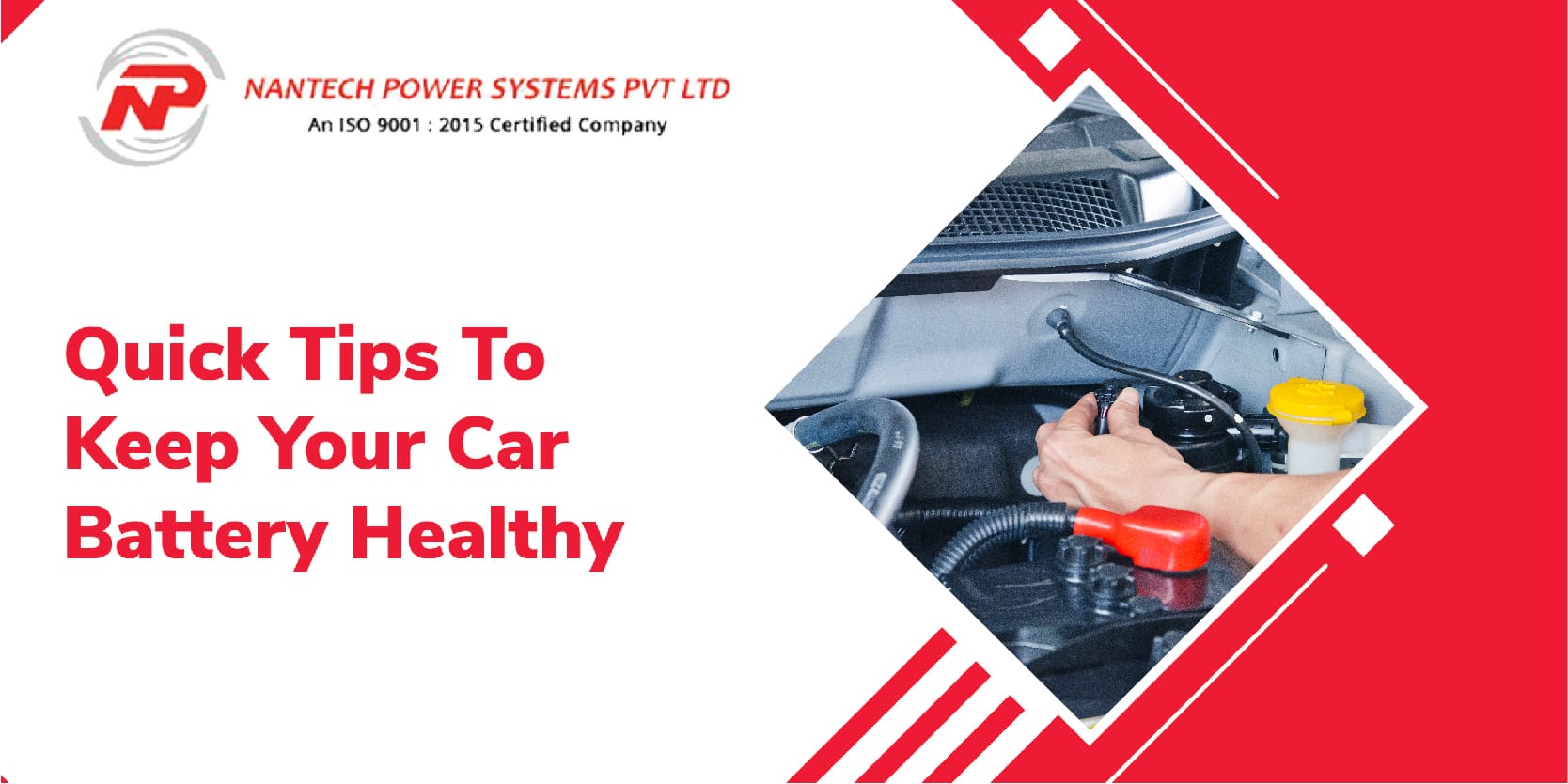
A battery is an indispensable part of your car. It can be compared to what the heart does to the human body- It constantly streams in a steady power source into your car components. All of the car’s electronics, including the ECU, headlights, AC, music system, horns, and even the starter motor, rely on the battery to function. And, that is why just like how we should keep our heart healthy, we should also keep our car battery healthy.
Say Checkmate To Climate
On average, a car battery should last between 2 and 6 years. However, the temperature can have a huge impact on the average battery life. A hot day can negatively affect the battery’s life expectancy because of the evaporation of its fluids. So, to make your battery last as long as possible, you must consider the climate in which you will drive. You should take extra care if you are driving in a hot climate.
It’s true that the climate is uncontrollable. But, you can control the battery damage in more than one way. Our experts understand your concerns about maintaining your vehicle batteries. That’s why we’re here to give you 8 tips to take good care of your car battery. As Chennai’s leading Exide car battery dealers and having served our clients for over two decades, we are confident that our maintenance guide will help your batteries last longer.
A car’s battery is unquestionably one of its most essential components. While car operations are almost impossible with low batteries, its high repair and replacement costs make maintenance even more essential. Regular maintenance will ensure the safety of car batteries for many years to come.
In light of our experiences, we have listed below some tips for maintaining your car battery.
Let shade be your car’s brigade
It has been observed that high temperatures often impact the volume of Sulphuric acid inside the battery. Rapid evaporation of the acid causes the battery to die sooner. The best way to protect your car battery from high heat and humidity is to park it in a shaded area or under a covered parking area. This will ensure that your vehicle is not directly exposed to heat.
Clean the batteries umpteen times
Over time, car batteries accumulate dust and corrosion. Rust can form over metal parts of the battery, especially around the terminals, if exposed to dirt and humidity for a long time. These are often the major causes of short circuits and discharges that hinder the longevity of your battery. Therefore, it is highly recommended to clean the battery regularly with a dry cloth to ensure a steady flow of power for a long time.
Say no to quick rides
Short rides prevent your car’s battery from getting fully charged. To avoid this, we recommend driving long distances and doing so more frequently. Investing in a portable car battery charger is a sensible option if you don’t drive your car too often. You can use portable chargers to jump-start your car if you get stranded on the road. You will not have to rely on getting assistance from other vehicles if you have a portable charger with you.
Also Read: Why Should You Rent A UPS System?
Monitor the battery’s water level regularly
Battery cells contain distilled water which must be monitored regularly to ensure the appropriate level is maintained. Over time these liquids tend to evaporate and get drained, eventually concentrating the acid. This condition can result in corrosion and reduced battery life. To ensure that the battery’s water level is maintained properly, and if it becomes low, top it up right away.
Fasten your battery tight
Loosely fitted batteries are prone to vibration. Vibration can cause serious internal damage and short circuits. Regularly inspect the terminals of your car battery to make sure it is fastened tightly to the mounting bracket. This is especially important when you make a long and bumpy ride in your car.
Lower the power usage
You should turn off your air conditioner and radio when the engine is not running. Using these power-consuming features can cause wear and tear on your battery. It has also been observed that extended periods of idling are harmful to the batteries.
Ride often
Unused cars can reduce the lifespan of their batteries if they are left for long periods. If you do not use the batteries for a long time, you will be unable to start the vehicle. If you are not in town, ask a friend to drive your car around.
Never forget to turn off the lights
When you step out of your car, make sure you turn off your car’s lights. Leaving the headlights or door lights on can shorten the life of your battery. Consider making it a habit to check the car’s lights every time you use it. This way, you ensure that your battery is not stressed or overloaded, thereby extending its life.
Maintaining a car’s battery is vital to avoid incidents of breakdowns and unexpected damages. With the eight tips mentioned in this article, be confident about driving your car safely and without the fear of breaking down. As one of the best USP and Exide car battery dealers in Chennai, we ensure that your car batteries receive prolonged service life and optimum performance. Our services and products are exclusively designed to exceed your expectations and keep you satisfied in all possible ways.

Every industry faces electrical issues that detrimentally affect the productivity of the work involved in the industry. This, in turn, leads to huge financial losses in the industry. To provide a power supply, either they have to buy a UPS system, lease a UPS system, or rent a UPS system. An uninterruptible power supply or UPS has the capacity to give emergency power to a load when the main power system fails to generate electricity. UPS protects hardware such as computers, telecommunication, and other electrical equipment. Many businesses prefer renting a UPS system to buying or leasing for a variety of reasons.
Leasing or buying a UPS system is expensive, and it is not affordable to all business owners. More than a thousand dollars are required to buy a UPS system, which may not be affordable to all. The cost involved in repairing a system and the maintenance cost can be reduced if we are renting a system instead of buying or leasing the same.
If a power cut happens abruptly, when data is transferred from one server to another, most of the important data will be lost. This can be rectified only by installing a UPS backup battery rental, which allows the system to run in a systematic manner and gives ample time for the system to shut down appropriately.
Frequent power fluctuations can cause internal damage to electrical devices. Only UPS has the capacity to sense the wrong power supply and filter it, thereby stopping all damage to the gadgets. Nantech power solutions guide us in selecting the appropriate UPS system for all electronic gadgets.
Also Read: Future of Power Supply in India
UPS systems assist in the ongoing smooth process of workflow, even if there is a shortage of power supply. The power supply is provided to the equipment without any interruptions if the UPS system is connected to it. Thus, all important projects can be executed before the deadline without any interruptions.
The best and quickest power supply provided by the UPS system helps in preventing power spikes and provides regular and systematic power flow.
To put it in short, in this world of cut-throat competition, power failures can cause tremendous losses to business establishments, banks, and all other financial sectors. Without any hindrance, the work process can be managed by installing a UPS rental system. Only UPS can give solace from the scorching summers due to power failures without intimation. For the execution of smooth business operations, it is mandatory to select the superior quality UPS rental system. If we are using the equipment for a short period of time, it is always advisable to rent a UPS system. While renting a system, the focus should always be to select the UPS system from a trustworthy company. The UPS technician of the Chennai-based company will install the system in either the workplace or home effectively.
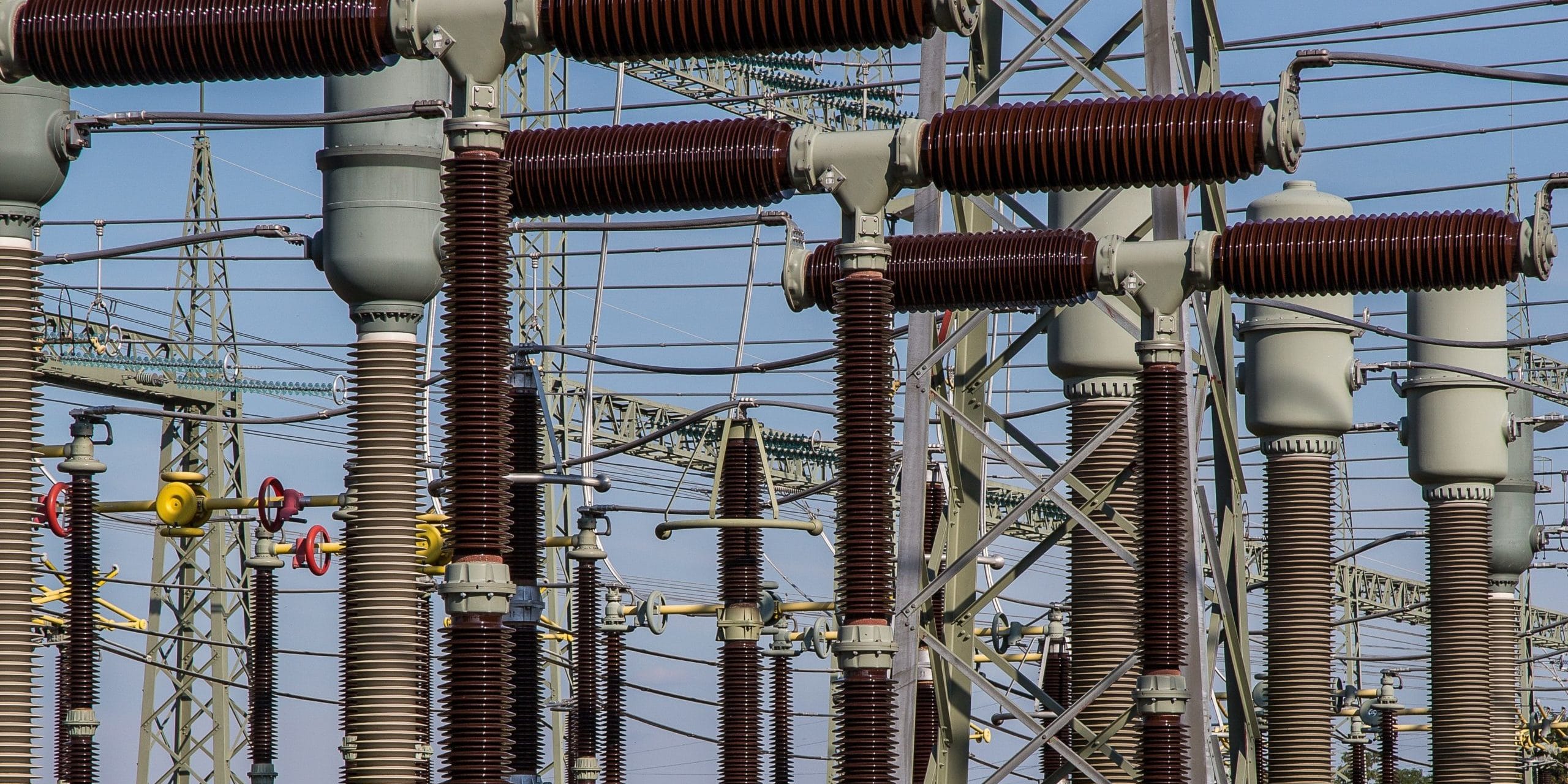
India is one of the leaders of energy producers in the world. Within India, Chennai is considered one of the top energy-supplying states in the country. So much so that we have enough plants and wind energy resources to produce enough power for the city and beyond! But with a global shift in power production, and a national aim to reduce pollution and carbon footprint, we shall soon be migrating to more sustainable technologies.
This migration will mean that we have to abandon some of our current procedures or introduce a change in them. We will see a significant shift towards renewable technologies like Solar, Wind, and hydroelectricity in the future. Tamil Nadu is already a hub for many Wind Energy plants, with fields of windmills dotting the landscape; it won't be long before we see an application of them in many micro settings of our cities.
We shall discuss each of these energy concepts in the upcoming sections to give you a brief overview of the future's energies.
Solar energy is a significant craze now! There is much development in solar technology in the world. We believe that for Chennai, Solar and Wind energy systems will dominate the landscape. We are already considering using solar panels on our streetlights to save a substantial part of the electricity budget. Many households these days have started adopting Solar Panels, Solar Inverters, and Solar Heaters.
Chennai is hot throughout the year, which is good news since that means the sun is out most of the time, and we can exploit it! Solar energy is here to come, and once our technology is adequate, Solar Energy will be all around the city!
Also Read: What Does Chennai Need in Terms For Better Power Management Systems?
Wind energy is another form of life that we can exploit. Chennai's monsoons can be windy, and the spring and autumn breezy. Hence, we can use the weather to our advantage and supply power to most of our Rural areas in Chennai who face frequent power cuts. Even though we can use Solar energy on a city-wide scale, we need to ensure that we use wind turbines to maximize our output and sustainability.
We need to keep in mind that every energy source is still liable to power cuts, and for that, proper backups to our power supplies in the form of inverters.
With the river Kaveri flowing through our state, we can, and we have utilized our rivers by controlling their flow for agriculture and industries and generating sustainable quantities of electricity!
We must ensure that our transmission lines are fitted with the proper transformers and Servo Voltage Stabilizers. The transmission of power is smooth while minimizing voltage losses along the line as much as possible.
While we can expect automobile industry changes in the future to be significant now, with the arrival of Tesla, we can safely conclude that such technologies will rise, which will significantly reduce our carbon footprint.
Please Check out Nantech for the best deals on all your electricity-needs in Chennai!

Chennai being a metropolitan city is a massive consumer of electricity and was infamous in the past for having frequent power cuts. The situation has improved with the introduction and application of new technology in power production and distribution. The sheer size of the city demands a complex system of power distribution, and that coupled with its heterogeneous urban and sub-urban localities requires even greater planning and execution to ensure continuous electricity is supplied to the entire city. One of the most promising solutions to this massive challenge is using an electrical power management system.
Due to increasing complexities like different loads and supplies, power-sensitive equipment, higher safety standards, and an all-around high need for comprehensive management, an electrical power management system needs to put in place. This system aims to provide real-time observation and control of the electrical states of entire cities. The power management system provides safe and reliable operation of your power distribution systems including the equipment attached to it. This system provides the following uses:
An electrical power management system is based on an intricate relationship between a digitalized background and quality hardware. There are sensors placed in particular positions to provide accurate real-time readings of electrical indices, power supplied, and the power consumed. These sensors relay their input to power metering devices, which have various capabilities like protection relays, and motor control units. This system along with the addition of smart devices installed provides a fully digitalized solution to power-related problems.
Also Read: Methods For Getting Through Power Cuts
The applications of electrical power management systems include:
Electrical system health and efficiency: - With the facility to record real-time electrical activities these systems can provide a high level of safety by preventing overloads, short circuits, identifying faulty equipment, etc. Along with this, it gives information about how we can improve the efficiency of a system.
Capacity management: - By recording and displaying past data, the future trends of power distribution can be predicted. For example, using previous data, the power management system of Chennai was able to avoid a wide-scale power cut when the Prime Minister of India requested its citizens to turn off the lights and fans in honor of the health care workers during the lockdown.
Equipment Monitoring: - Faulty equipment or underperforming equipment can be detected and replaced by using smart technology. Harmonic wave distortion can also be prevented effectively.
Power event Analysis: - In general, the electric grid is dynamic and prone to regular disturbance. This system can detect these disturbances and find out the root cause and isolate it.
Since Chennai is an ancient city and is ever-evolving, it is difficult to place a single new electrical power management system for the entire city. However, big institutions, offices, factories can independently install such systems for better efficiency and safety. A clear vision and thoughtful execution are of paramount importance to connect all these systems to make Chennai virtually a high functioning single organism.
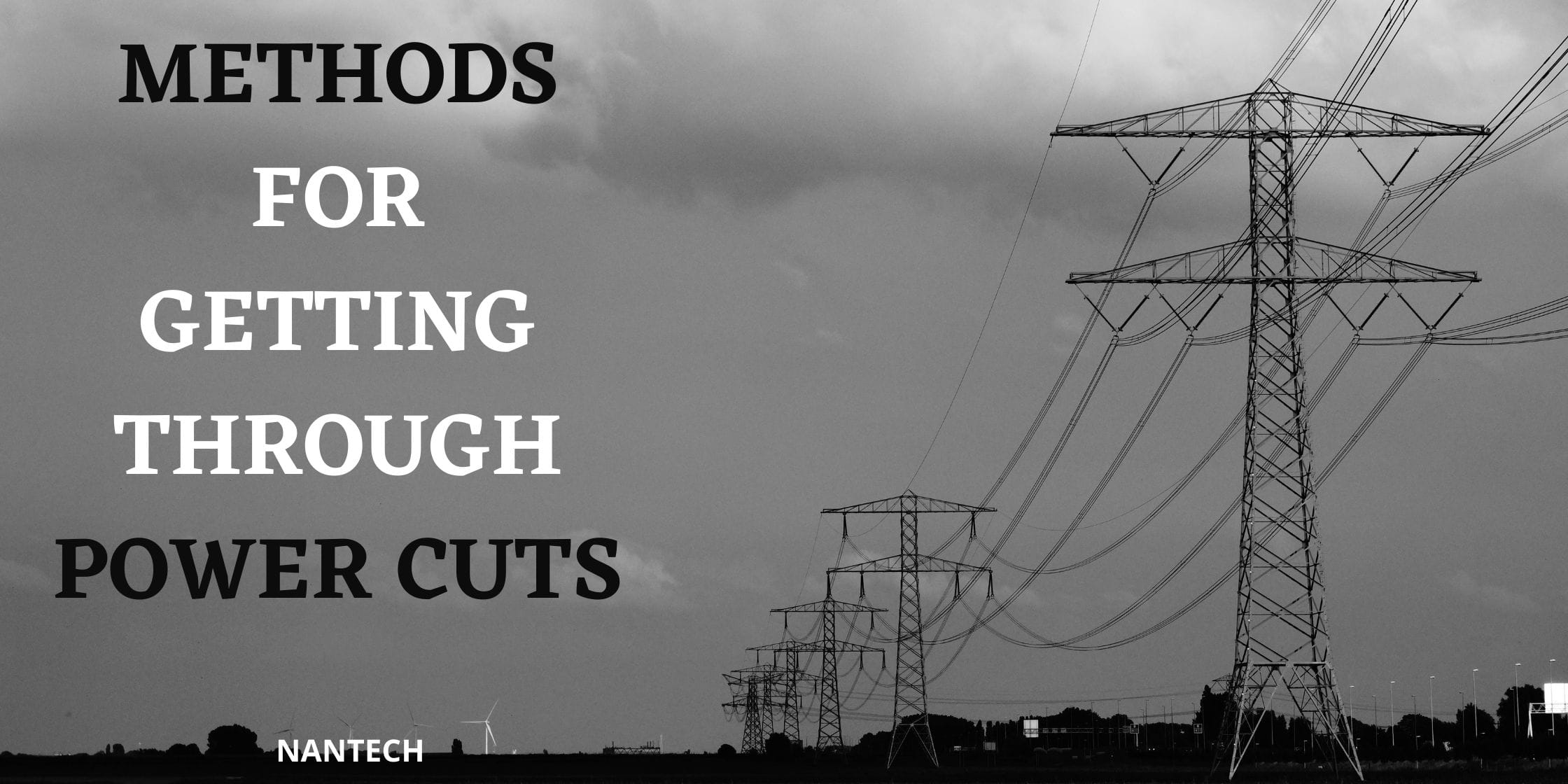
We heavily rely on electricity for our needs. From businesses to homes, office buildings, and factories – everywhere we depend on electricity for not just our day-to-day operations and conveniences, but also for maximizing business profits and sustaining organizations. Electricity is a key resource in every aspect of our lives today.
In a previous article, we mentioned how Chennai faces power cuts, and all the statistics related to it. We now know that power cuts can occur anytime and anywhere, hence we must prepare for the same by equipping ourselves with the right products to get us through one.
Fortunately, there are many such products and devices available in the market that are made so that we can get through such power cuts. Mainly, an Uninterrupted Power Supply (UPS) system is used, but there is one more feasible method that can prove more beneficial! This article shall give you an overview of all such methods, and in the end, a link to the best place to get them in Chennai!
UPS systems are the most common methods of mitigating power failures. The main idea of these systems is that there is a battery to store power, an AC/DC converting rectifier, and a DC/AC converting inverter. Many brands are available for the same as well. There are three types of UPS systems that are commonly used:
Online UPS systems – currently the best UPS system available in the market. This uses a ‘double-conversion’ process, first converting AC/DC to the battery, and in case of a failure, DC/AC back to the inverter, and then to the power lines. This has excellent noise protection, almost no power transfer time delay, and within ±2-3% voltage regulation, making it suitable for critical equipment.
Line-Interactive UPS Systems – These provide intermediate-level power protection. Here, a bypass carries power from your inverter (connected to the main line) to the batteries for charging, and the battery discharges back to your inverter in case of a failure. It also has better surge protection, 2-4ms delay in power transfer time, and output voltage regulation within ±8-15% of nominal voltage.
Offline UPS Systems – These provide a basic level of power protection for your equipment. We connect a battery in parallel to the supply line, and during the case of a failure, the battery supplies power to your connections. These provide little surge protection, a 2-10ms delay in power transfer for your systems in a failure, and little voltage regulation.
Also Read: Power Cuts Frequency in Chennai
Solar power systems are slowly gaining traction, both in business investments and in research advancement and funding. They mitigate carbon footprints and reduce pollution. We mention Solar systems because Chennai has a tropical climate for the most part of the year, where the sun shines upon us. Why not utilize it? Some uses for solar technologies are:
Nantech is your go-to shop in Chennai for all products pertaining to UPS systems, inverters, transformers, solar panels, SVRs - anything you may need! Please check us out by clicking the link!
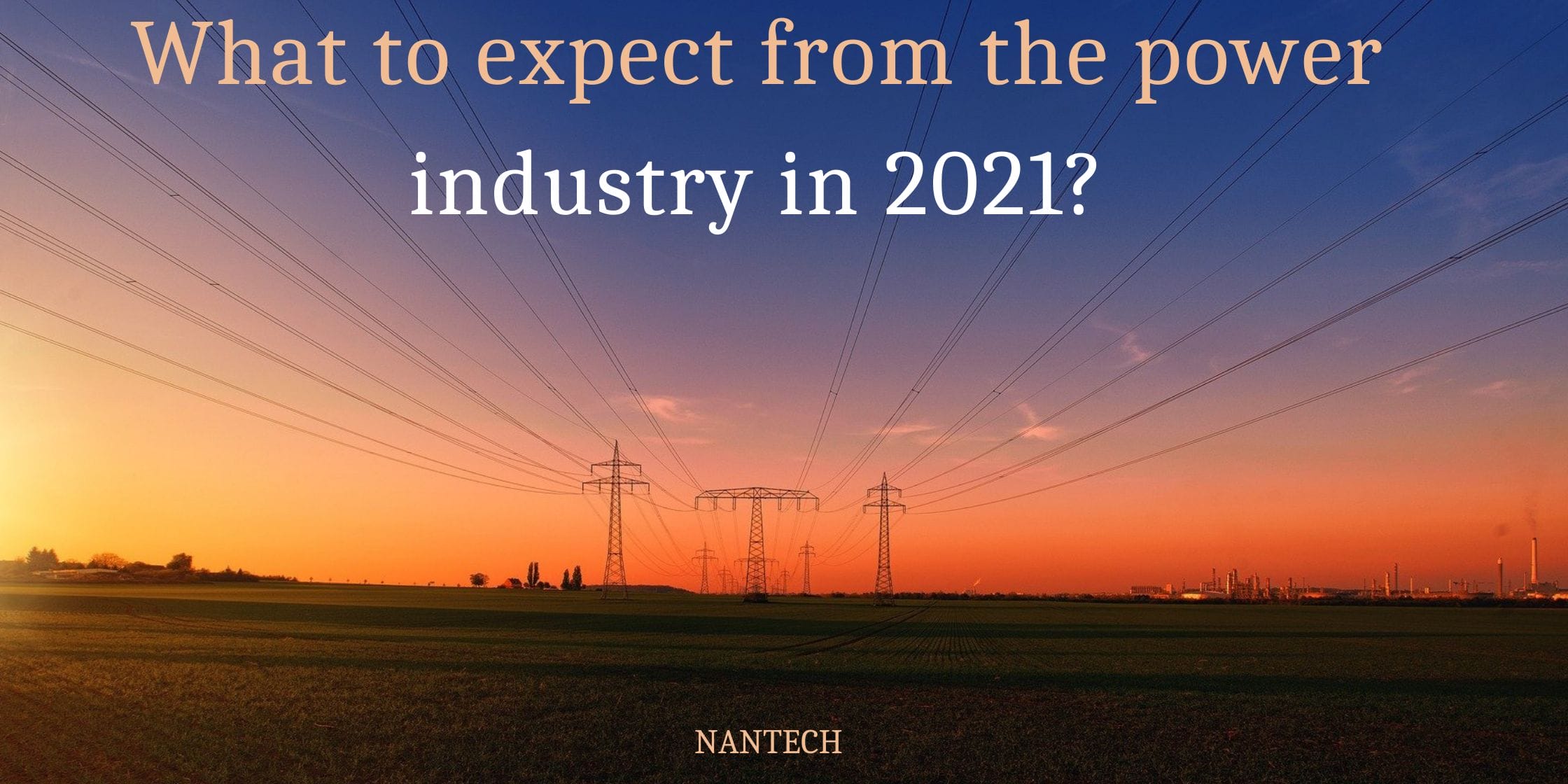
Chennai is one of India’s bustling metropolitan cities, with many businesses running their day-to-day operations to many households living and thriving in communities and societies. Many restaurants are serving quick idlis, vadais, and dosas for people rushing to their offices, and many schools and institutes are grooming tomorrow's future. Even Metros are now coming to many areas, and soon we shall indeed be a metropolitan city.
Noticed something familiar in all these examples? They all require electricity. A day of not having electricity can make most of these businesses lose customers and hence profits. As an example, if metros don't get a power supply, their facility will completely stop. A regular office-going person wouldn’t be able to catch his train on time then.
Hence in this article, we shall explain how frequent power cuts are in Chennai and why they are essential for you to know. Through this article, we aim to convince you to invest in power-saving equipment that will benefit your business(es).
Now keep in mind that when we say power cuts, we could refer to two different scenarios:
An electrical fault in the supply line - This problem is something we should consider. Any issue (say) in the carrier line or a transformer at the electricity generation plant can make you have to wait while the power gets restored. Now here too, there are two sub-categories:
We can use scheduled outages as a metric since the others are something we cannot track. Please note that we are giving rough estimates backed by sufficient research. Now coming to the actual statistics:
In the last three years,
| Year | Number of Outages Scheduled | Number of Outage Areas/Events | Total number of Outage Events |
|---|---|---|---|
| 2019 | 19 | 7-8 | 133-152 |
| 2018 | 15 | 5-6 | 75-90 |
| 2017 | 14 | 5-6 | 75-90 |
We see that the power cuts have been increasing in frequency over the last three years. This data shows us that we need to prepare for any scenario by investing in good quality power-saving equipment. Nantech is your go-to place for all your power-saving needs in Chennai, with excellent products and services! Please come and check us out here, and we assure you of an enriching and rewarding experience!
We wish you a Happy New Year and Happy Shopping!
Reference